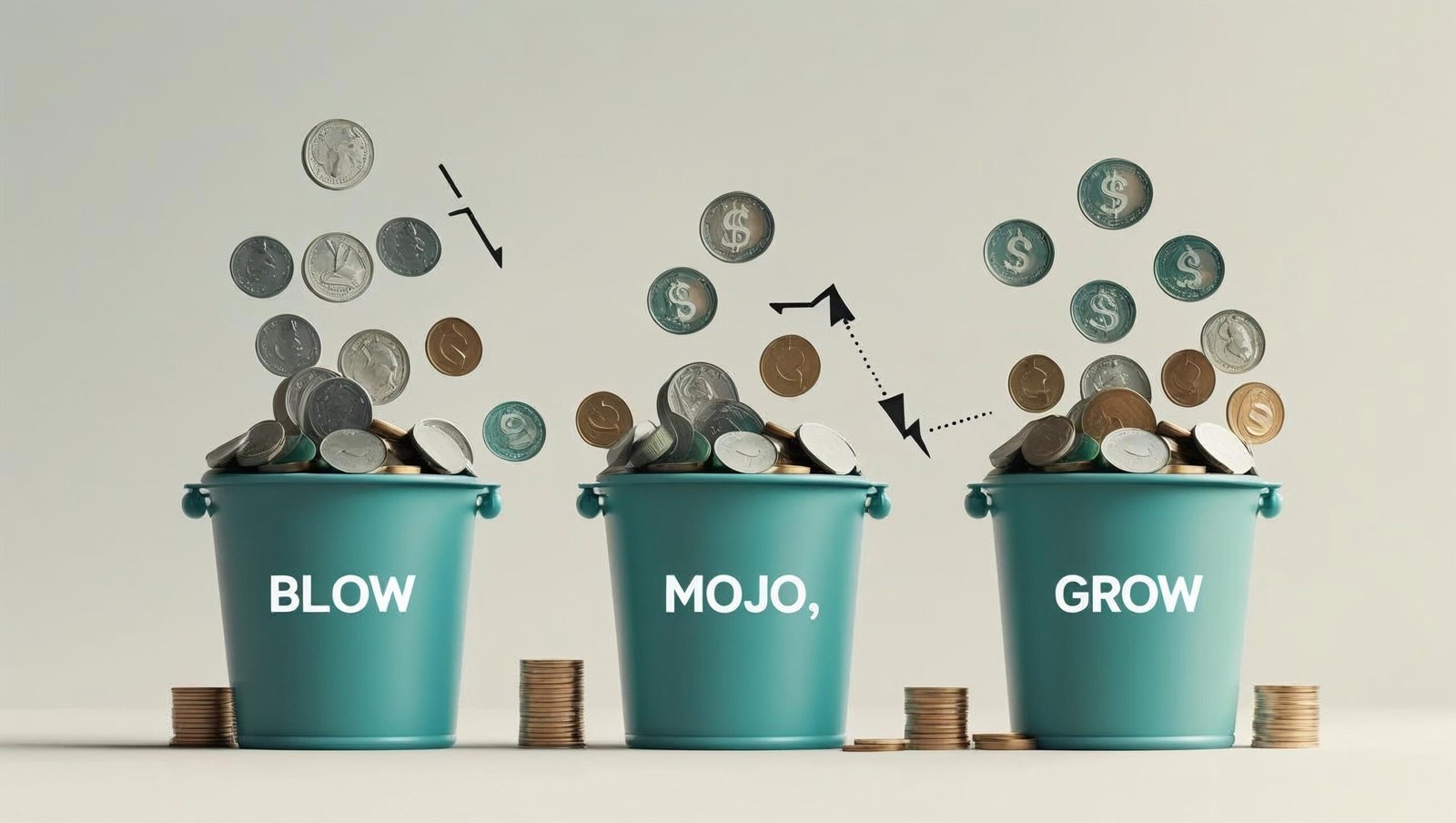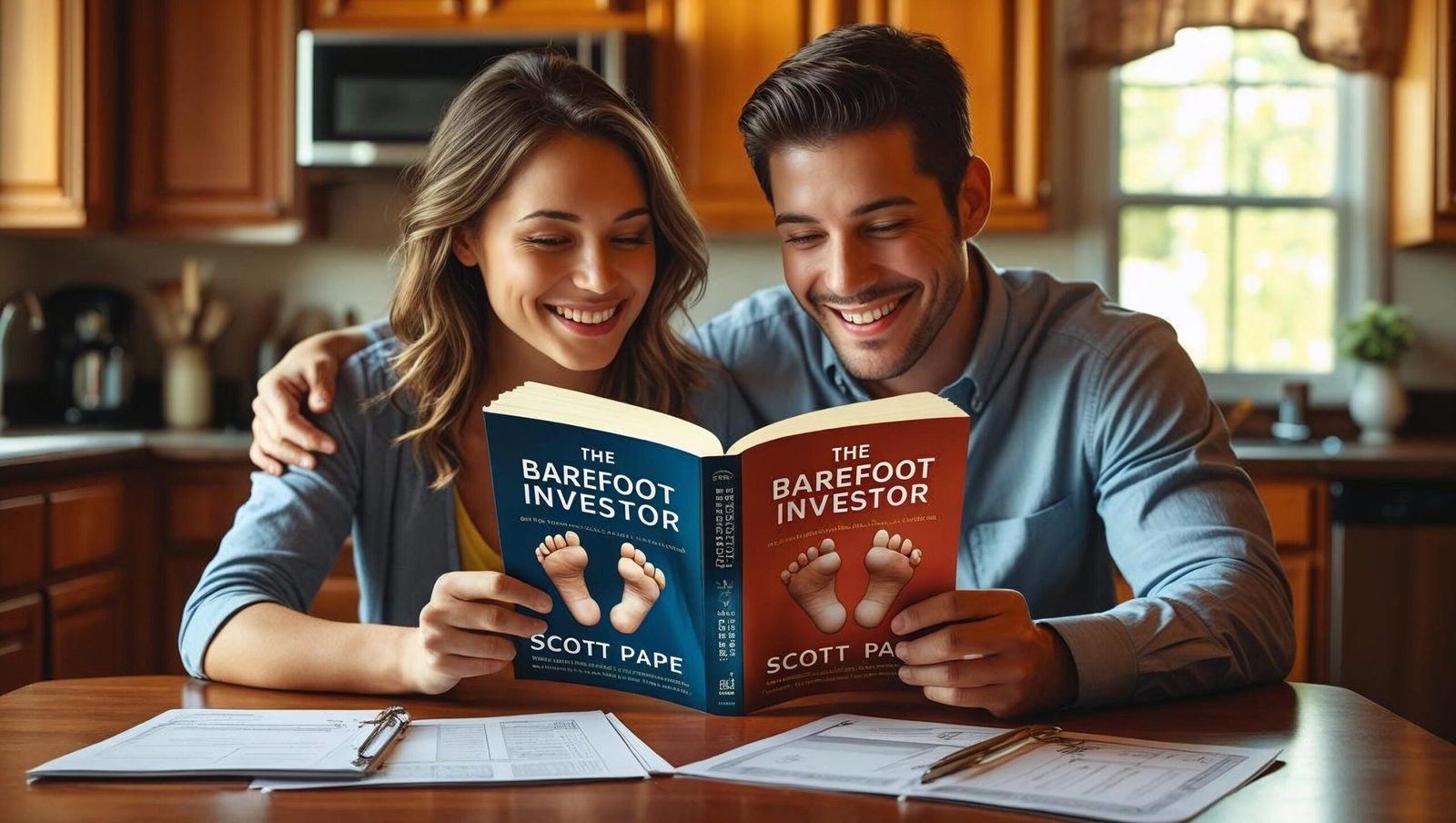Introduction: The Wake-Up Call You Didn’t Know You Needed
In the world of financial self-help, many books promise wealth, but few offer simplicity, clarity, and practicality like The Barefoot Investor by Scott Pape. While countless money gurus preach stock market tricks and real estate riches, Scott Pape brings us back to the basics — budgeting, bank accounts, and barefoot steps. This book is not just a financial guide; it’s a philosophy of life designed to empower ordinary people.
This comprehensive review of The Barefoot Investor by Scott Pape dives into its most transformative lessons, critiques its methods, and helps you decide whether this is the personal finance manual you’ve been waiting for.

Who Is Scott Pape?
Before understanding The Barefoot Investor by Scott Pape, we must first understand the man behind the message. Scott Pape is an Australian financial advisor, media personality, and former investment advisor who chose to leave the rat race and help everyday Australians gain control over their money. After his family home burned down in a bushfire in 2014, he rebuilt his life using the very steps he now teaches millions. His authenticity and experience form the soul of his writing.
What Makes The Barefoot Investor by Scott Pape Different?
Most finance books aim high — stocks, crypto, or property investing. The Barefoot Investor by Scott Pape instead starts with the ground beneath your feet. Pape advocates for what he calls “Date Nights,” “Mojo Accounts,” and “Buckets” — quirky terms for simple strategies that demystify money management.
The key strength of The Barefoot Investor by Scott Pape is its accessibility. Whether you’re 17 or 70, you’ll find that his language, tone, and examples feel like a friendly conversation rather than a financial lecture.
7 Unfiltered Truths from The Barefoot Investor by Scott Pape
1. The Power of Simplicity: Automation Wins
At the heart of The Barefoot Investor by Scott Pape is automation. He insists on setting up three main “buckets”: Blow, Mojo, and Grow. Each bucket has a purpose — spending, emergency savings, and investing.
Rather than obsessing over every dollar, Pape encourages automation so your money flows effortlessly. This concept transforms finances from chaotic to calm, which is a powerful psychological shift.
“Don’t worry about the market. Worry about your behavior.” – Scott Pape
2. Ditch the Debt, Slash the Stress
Debt is described as the silent killer of financial freedom in The Barefoot Investor by Scott Pape. From student loans to credit cards, Pape outlines a “domino” method — pay off the smallest debt first to gain momentum, then attack the next.
He recommends cutting up your credit cards and switching to debit — a radical yet effective strategy that forces discipline. This method is not glamorous, but it works.
3. The Mojo Account: Your Financial Lifeline
A defining feature of The Barefoot Investor by Scott Pape is the Mojo Account — a separate savings account designed to protect you during emergencies.
Pape recommends starting with $2,000 as a minimum. Unlike traditional emergency funds, the Mojo is about peace of mind, not just money. It’s your parachute during turbulent times — a concept deeply rooted in his own life after losing everything in the bushfires.
4. The Barefoot Date Nights: Love Meets Finance
In The Barefoot Investor by Scott Pape, Pape introduces the innovative idea of “Date Nights” — regular check-ins with your partner to discuss finances. Instead of stressful arguments, it becomes a bonding ritual.
By turning financial planning into a shared journey, couples develop trust and mutual goals. This practice reduces tension and improves transparency in relationships.

5. Say No to Budgeting, Say Yes to Bucketing
Most people hate budgeting. Pape knows this. That’s why The Barefoot Investor by Scott Pape introduces the “Bucket System” — money is split into defined percentages:
-
60% Daily Expenses (Blow)
-
20% Emergency (Mojo)
-
20% Long-term Growth (Grow)
This method is intuitive and visual, which makes it stick. It allows freedom within boundaries — you can spend without guilt, save without struggle.
6. Start Now, Not Later: The $5 Wealth Builder
The Barefoot Investor by Scott Pape emphasizes urgency. One of his most motivating ideas is the $5 rule — if you can save $5 a day, you can transform your financial future.
By cutting small expenses like coffee or takeaway, Pape illustrates how small decisions snowball into life-changing results. It’s not about deprivation, but about awareness.
7. Superannuation: Don’t Ignore Your Future Self
For Australian readers, The Barefoot Investor by Scott Pape dives into superannuation (retirement funds). He encourages reviewing your fund, slashing hidden fees, and taking control of your future.
Though this may not directly apply to international readers, the underlying message is universal — don’t ignore your future. The earlier you start, the easier it becomes.
Bringing Financial Literacy to the Masses
One of the greatest triumphs of Scott Pape’s approach is how he takes complex financial jargon and transforms it into everyday language. Many people shy away from personal finance simply because it feels inaccessible. Traditional resources often feel dry, academic, or overwhelmingly technical. What this book does differently is make personal finance engaging, even entertaining, without sacrificing depth.
By using relatable analogies and storytelling, Pape breaks down abstract concepts. Terms like “Mojo” or “Grow Buckets” sound casual, but they represent some of the most important tools in personal wealth-building. The use of storytelling also helps reinforce the emotional component of financial decisions, something most books overlook.
Realism Over Perfection
What truly resonates with readers is the sense of realism. This isn’t a book that demands you become an expert in trading or live a minimalist lifestyle overnight. It meets people where they are. Whether someone is drowning in debt or living paycheck to paycheck, the strategies suggested are designed to be immediately implementable.
The tone remains grounded, practical, and non-judgmental. There’s no shaming for poor past choices. Instead, there’s a tone of encouragement and redemption — a message that no matter how dire your situation, there is a path forward.
Practical Tools and Templates
Throughout the chapters, the author includes worksheets, checklists, and sample scripts. These tools empower readers to take immediate action. For example, there’s a script to help you negotiate better interest rates with your bank or cancel unnecessary services. There’s also a step-by-step plan for setting up bank accounts to better track and manage money flow.
Having these tools included within the book eliminates the need for external resources. It offers a one-stop solution for readers just beginning their financial wellness journey. The structure is also designed to build momentum — with each completed step, you gain confidence to move to the next.

Addressing Emotional Spending and Behavioral Biases
One area where this work stands out is in its treatment of behavioral finance. It recognizes that most people don’t make financial decisions based purely on logic. Emotions play a huge role in overspending, impulse buying, and saving procrastination.
The book encourages mindfulness and self-reflection. It shows readers how to identify emotional triggers that lead to poor decisions, and offers calming routines to counteract them. Pape introduces habits like weekly check-ins or automatic transfers as behavior-correcting mechanisms.
Comparing with Other Financial Books
When compared to other popular financial guides, this one feels refreshingly personal and actionable. While Robert Kiyosaki’s Rich Dad Poor Dad leans heavily into mindset and real estate, and Tony Robbins’ Money: Master the Game dives into complex investment strategies, Scott Pape focuses more on creating a solid foundation.
In many ways, it complements books like Your Money or Your Life by Vicki Robin or I Will Teach You to Be Rich by Ramit Sethi. But where others may focus on theory or persuasion, this book delivers an executable framework from the first chapter.
The Cultural and Social Impact
In Australia, this book sparked a cultural shift. Schools began incorporating its teachings into their curriculum. Communities started hosting financial literacy meet-ups inspired by the lessons. Media outlets frequently cited its strategies during segments on family budgeting and recession preparedness.
The ripple effect is significant. Parents are now gifting the book to their children as a rite of passage. Retirees are using it to optimize their savings. Couples are rethinking how they talk about money. The impact has gone beyond the individual and into collective consciousness.
Tackling the Money Taboo
Money remains a taboo subject in many households. This silence breeds misunderstanding and resentment. The book works as a conversation starter — its “Date Night” concept is one of the most powerful tools to break this barrier.
By encouraging couples to sit down and discuss their financial hopes, fears, and responsibilities, the book strengthens not just bank accounts, but relationships. It sets a model for honesty and transparency that transcends financial health.
Children and Early Financial Education
The younger a person starts their financial education, the better prepared they are for adulthood. What’s commendable about Pape’s philosophy is how he advocates for teaching kids about money early on.
He even wrote a companion version specifically for teenagers. The idea is not to inundate kids with fear or pressure, but to instill smart habits like saving, goal-setting, and delayed gratification. This kind of early intervention sets children up for a lifetime of good choices.
Mindset Over Math
Another profound takeaway is the emphasis on behavior over calculation. You don’t need a degree in economics to follow this system. What you do need is consistency, discipline, and a willingness to take small steps.
There’s a common myth that wealth requires intelligence or luck. This book dismantles that myth by showing that anyone can take control — even those starting with zero or in debt. Financial peace, it suggests, is more a matter of character than capital.
The Role of Technology and Banking Tools
As the world goes digital, banking tools and budgeting apps have become integral. The book encourages readers to use online banking features like automatic transfers, balance alerts, and categorization tools. These small tech interventions can prevent overspending and promote saving.
It also addresses the problem of “lazy banking” — where people stick with the same institutions and high fees simply due to inertia. Readers are shown how to compare products, evaluate hidden costs, and make switches when necessary. This alone can save thousands over time.
Case Studies: Proof That It Works
Many people are skeptical until they see real-life examples. That’s why the book includes numerous stories from readers who turned their lives around. From a single mother paying off loans to a retiree finding peace of mind, these stories add emotional depth.
They also provide motivation. It’s easy to dismiss financial advice as unrealistic until you see someone in your shoes succeeding. These testimonials offer proof that the system works across ages, income levels, and backgrounds.

Psychological Rewards of Financial Stability
Financial health brings more than material benefits. It reduces anxiety, improves sleep, and strengthens relationships. When bills are paid and savings are growing, people experience higher life satisfaction and confidence.
This emotional benefit is deeply embedded throughout the book. It doesn’t frame wealth as luxury but as peace. Readers are not encouraged to chase millions, but to gain freedom — the freedom to choose work you love, spend time with family, or retire with dignity.
The Role of Minimalism and Intentional Spending
An indirect yet powerful theme in the book is intentionality. Rather than focusing on frugality or denial, the message is about being deliberate. Spend on what truly matters. Cut out what doesn’t. This aligns closely with the philosophy of minimalism.
Intentional spending also helps reduce clutter and mental noise. When every purchase is aligned with your values, your financial and emotional lives come into balance. You stop buying to impress, and start buying to enrich.
Redefining Success
Success, as portrayed here, isn’t about flashy possessions. It’s about security, freedom, and fulfillment. It’s the ability to sleep well at night, knowing your bills are paid and your future is under control.
This redefinition is empowering. It liberates people from social comparison and toxic financial competition. It sets a benchmark for happiness that is sustainable and deeply personal.
Summary of Additional Insights
To recap, here’s what these additional reflections bring to light:
-
Accessibility and simplicity are game-changers for financial education.
-
Real-life stories add relatability and build trust in the method.
-
Early intervention with children sets lifelong habits.
-
Emotional wellness is as important as numeric outcomes.
-
Tools and templates help turn intention into action.
-
Minimalism and purpose-driven spending elevate quality of life.
-
Behavior, not brilliance, is the key to financial success.
Criticisms of The Barefoot Investor by Scott Pape
While The Barefoot Investor by Scott Pape is empowering, it’s not without criticisms. Some feel that the advice is too basic, especially for those with intermediate or advanced knowledge. Investors may also find limited guidance on wealth-building vehicles like stocks or property beyond the basics.
Moreover, the book’s Australian context (especially the emphasis on superannuation and local banking) may feel irrelevant for global audiences. However, the core principles remain universally applicable.
Why The Barefoot Investor by Scott Pape Works for Beginners
The brilliance of The Barefoot Investor by Scott Pape lies in its ability to reach the financially anxious, not the affluent. It breaks down money management into achievable milestones, builds confidence, and provides a structured roadmap. It doesn’t promise millions overnight but promises something more valuable — control.
Unlike books filled with jargon, The Barefoot Investor by Scott Pape invites readers to take action today — not after finishing the book, but from chapter one.
Real-Life Transformations from Readers
Countless testimonials have emerged from readers who followed the steps in The Barefoot Investor by Scott Pape. People have reported paying off mortgages early, eliminating thousands in credit card debt, and even retiring early.
This groundswell of success stories proves that the system works — not just in theory, but in practice.
Best Quotes from The Barefoot Investor by Scott Pape
“You can’t outsource your financial life and expect to win.”
“Getting rich is boring. But it’s simple.”
“The best time to start was yesterday. The next best time is now.”
Each quote from The Barefoot Investor by Scott Pape encapsulates a deep truth — money is more behavior than math.

Who Should Read The Barefoot Investor by Scott Pape?
-
Young Adults: For those just beginning their financial journeys.
-
Couples: To align money goals and reduce conflict.
-
Debt Holders: To break free from the cycle of borrowing.
-
Parents: To teach children simple money habits.
-
Anyone Feeling Overwhelmed: To regain clarity and confidence.
Whether you’re struggling or simply curious, The Barefoot Investor by Scott Pape offers a sturdy starting point.
FAQs on The Barefoot Investor by Scott Pape
Q1. Is The Barefoot Investor by Scott Pape still relevant in 2025?
Absolutely. While some banking products have evolved, the core lessons on budgeting, saving, and behavior remain timeless.
Q2. Can non-Australians benefit from this book?
Yes. Though certain elements like superannuation are Australia-specific, the budgeting and mindset principles apply globally.
Q3. Is The Barefoot Investor by Scott Pape good for students?
Definitely. It offers foundational advice with simple steps — perfect for students beginning to earn or manage money.
Q4. Does the book teach investing in stocks or real estate?
Only the basics. The Barefoot Investor by Scott Pape focuses more on financial security and budgeting than advanced investment tactics.
Q5. Is the book too simple for someone already managing finances well?
It might be. However, even experienced readers have found the book’s structured clarity and behavioral insights refreshing.
Conclusion: A Financial Lifesaver in a Noisy World
In a marketplace filled with complexity, The Barefoot Investor by Scott Pape offers clarity. His steps are logical, his tone is human, and his impact is undeniable. Whether you’re buried in debt or just looking to optimize your finances, this book provides a trusted, no-nonsense path to follow.
Forget the get-rich-quick schemes. Instead, embrace real financial freedom — one barefoot step at a time.
For more practical book reviews that transform your thinking, visit
👉 shubhanshuinsights.com
Comment Below:
Have you read The Barefoot Investor by Scott Pape? What was your biggest takeaway? Drop your thoughts and let’s start a money-smart conversation.